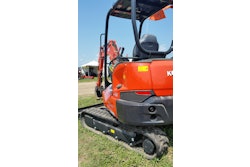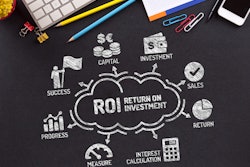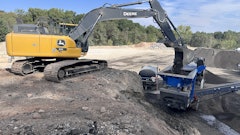
I follow a few economists, investment bankers and financial advisors to keep on top of what has happened and what is going to happen based on their analysis. That does not mean I accept what they say 100% of the time, because my actual daily experience with both the construction and equipment world gives me ideas how to improve a contractor’s financial position. I read, I study, I discuss and I mix it all together to arrive at a plan of attack that appears reasonable and profitable.
One economist I follow is John Mauldin, who explains his theories to the point where you can act on them as you see fit. In a recent piece, he made a statement about planning for next year that is quite provocative.
Mauldin suggested that times have changed to the point where procedures and policies are not returning to where they were or how they were transacted in 2019. He followed up by saying that using historical financial data to plan for 2021 is probably not a good idea because the financial relationships you had in place in 2019 and at the start of 2020 will not work or relate to each other as they have in the past. In other words, you start from scratch when laying out your plan for 2021.
What about the construction industry? Do you believe you can do business like you did before March 2020? Do you think the phone will ring as often to review a set of plans for a job? Do you believe you will be able to close the same percentage of bids won compared to bids reviewed? Do you believe that your competitors are the same people and companies that you competed against before?
You may think that is what is going to happen. But I don’t think so.
Take a “From Scratch” Approach
This recovery is going to be tough. There will be a lot of work floating around. There will be shortages of both equipment, parts and materials. You may have lost some key people just when there will be high demand for qualified tradespeople. In other words, I don’t believe you can budget revenues and related gross profits as you did before, because all of the financial metrics have changed. If you don’t change, as well, you may get some work but probably not make much money.
That being a possibility, let’s start from scratch to plan out 2021. First, you need capital and probably more than usual depending on the new revenue silos you may be adding to your menu of products and services.
- What do you have in the bank?
- What liquidity can you generate from banks and other types of lenders?
- What are your equipment needs and can you finance a purchase or lease based on your current balance sheet?
Capital is what is needed before you take on Step 2. You need cash to cover inventory, payroll and operating expenses for at least three or four months, since it could take two or three months to collect on the first month’s billing. A bank could loan based on inventory and work in progress (WIP) and accounts receivable (AR), but after that you start running out of liquidity options.
Use Marketing to Reach the Top of the List
You also need cash to market the business in order to ensure your ability to attract enough bid requests to keep the boat afloat, and at the same time attract new customers you may not have worked with before. In other words, your company needs to be at the top of the list potential customers use to send out bid requests.
To help with this “from scratch” scenario, contractors have to fine tune their product line and find ways to bring “value added” to the table. Use advertising, mailers, postcards, email blasts (e-blasts), phone calls, customer meetings, vendor meetings and whatever else you can drum up to get your name out into the marketplace.
I would not reinvent the wheel here but look at what other companies are doing that will fit your type of work and give it a shot. I’m aware of services that do this type of work — email lists, e-blasts, website options and google lists — for as little as $300 a month... and it works.
We can go on and on regarding starting “from scratch.” But the bottom line is you need to produce a method to find and close business by taking business from competitors who are just plodding along like they did before.
Final Thoughts
There are a couple of other things to consider for 2021.
Make sure you know your tax position for 2020. You probably don’t have a meaningful tax exposure position to worry about regarding 2020, but if you do, that’s great. So, be careful to not use losses or bonus depreciation to reduce taxes at low brackets. It may be wise to push them into 2021, when you are making more money and where tax rates may be higher. Get together with your tax folks and find out where you stand and at what brackets you are dealing with.
If your equipment needs repair, it may pay to do it sooner rather than later. Shops need the work and parts are probably available. But after the recovery takes hold, the cost and time it takes to repair a machine could increase considerably.
With the pent-up demand for used equipment, you can bet pricing will also increase appreciably.
Now, go start “from scratch!”



















